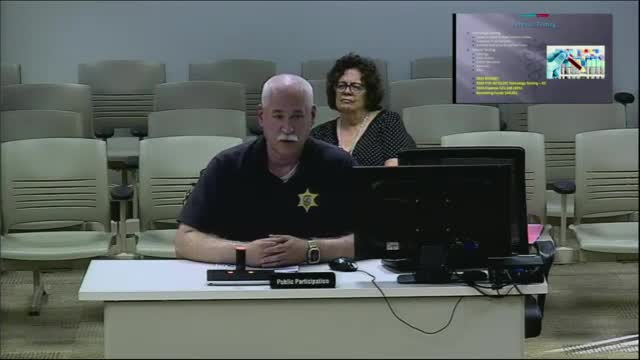Coroner reveals shocking death statistics and community initiatives
August 13, 2024 | Champaign County, Illinois
This article was created by AI summarizing key points discussed. AI makes mistakes, so for full details and context, please refer to the video of the full meeting. Please report any errors so we can fix them. Report an error »

In a recent government meeting, the Champaign County Coroner's Office provided a comprehensive update on various aspects of their operations, including death investigations, toxicology testing, and community outreach initiatives.
The coroner reported a total of 877 deaths reported year-to-date, with 134 death scenes investigated. Of these, 62 were classified as accidental deaths, primarily due to falls, while 6 were homicides and 8 were suicides. Notably, overdose deaths have decreased to 18 this year, attributed to law enforcement efforts and community programs like free Narcan training.
The coroner emphasized the importance of DNA testing in ongoing investigations, particularly in cases where victims are unrecognizable, such as a recent motor vehicle crash. The office has conducted 83 toxicology tests and is currently managing 29 pending cases awaiting results.
In terms of operational efficiency, the coroner highlighted improvements in the processing of death certificates, noting that the average time for non-trauma cases is about 29 days, significantly below the typical three-month wait. Temporary death certificates are issued when investigations are ongoing, although some institutions, like banks, may not accept them.
The meeting also addressed the challenges in recruiting forensic pathologists, with the coroner's office recently terminating a contract with a recruitment firm due to a lack of suitable candidates. Efforts to enhance training for staff were discussed, with deputies receiving extensive training on various aspects of death investigations.
Legislative updates included the approval of a state bill that indemnifies pathologists working for the county, which may help attract professionals to Illinois. The coroner's office is also actively engaging with the community through educational programs and initiatives to promote organ donation.
Overall, the meeting underscored the coroner's commitment to improving services, supporting families during difficult times, and addressing the ongoing challenges posed by drug-related deaths in the community.
The coroner reported a total of 877 deaths reported year-to-date, with 134 death scenes investigated. Of these, 62 were classified as accidental deaths, primarily due to falls, while 6 were homicides and 8 were suicides. Notably, overdose deaths have decreased to 18 this year, attributed to law enforcement efforts and community programs like free Narcan training.
The coroner emphasized the importance of DNA testing in ongoing investigations, particularly in cases where victims are unrecognizable, such as a recent motor vehicle crash. The office has conducted 83 toxicology tests and is currently managing 29 pending cases awaiting results.
In terms of operational efficiency, the coroner highlighted improvements in the processing of death certificates, noting that the average time for non-trauma cases is about 29 days, significantly below the typical three-month wait. Temporary death certificates are issued when investigations are ongoing, although some institutions, like banks, may not accept them.
The meeting also addressed the challenges in recruiting forensic pathologists, with the coroner's office recently terminating a contract with a recruitment firm due to a lack of suitable candidates. Efforts to enhance training for staff were discussed, with deputies receiving extensive training on various aspects of death investigations.
Legislative updates included the approval of a state bill that indemnifies pathologists working for the county, which may help attract professionals to Illinois. The coroner's office is also actively engaging with the community through educational programs and initiatives to promote organ donation.
Overall, the meeting underscored the coroner's commitment to improving services, supporting families during difficult times, and addressing the ongoing challenges posed by drug-related deaths in the community.
View full meeting
This article is based on a recent meeting—watch the full video and explore the complete transcript for deeper insights into the discussion.
View full meeting
